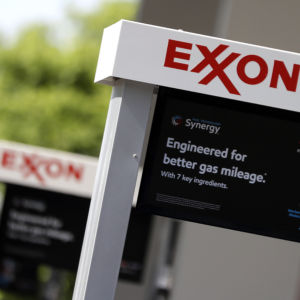In July, Naomi Oreskes, a Harvard professor, published an article in Environmental Research Letters — ERL — claiming that ExxonMobil mislead the public on climate change. In reaching her conclusion, she used a social science technique known as content analysis to document what was alleged to be a careful analysis of ExxonMobil research and advertorials published in the New York Times.
Content analysis is supposed to be a “systematic, objective, quantitative analysis of message characteristics.” But, Professor Oreskes has demonstrated in her prior work that she is anything but objective. Her work suffers from confirmation bias, which Barbara Tuchman in her book “The March of Folly” called “wooden headedness” — assessing a situation in terms of preconceived fixed notions while ignoring or rejecting any contrary signs … acting according to wish while not allowing oneself to be deflected by the facts.”
The media covered her article extensively because her conclusion was dramatic. That coverage was a result of a well-orchestrated campaign funded by the Rockefeller Family Fund (RFF). In addition to providing financial support to Oreskes for her article, RFF also funded a similar initiative at the Columbia School of Journalism and for the creation of an electronic news organization, Inside Climate News, that is a vehicle for climate and environmental advocacy to reach journalists.
Independent of her funding, Oreskes has demonstrated that she is on a vendetta against companies and people who do not adhere to the climate orthodoxy. Because of a well-documented bias, her use of content analysis is a self-fulfilling prophecy. The article claims a contradiction between company research and expressions of views on policies but fails to demonstrate such contradiction convincingly.
Like her prior work, “Merchants of Doubt,” and a survey demonstrating a scientific consensus on global warming, the ERL article fails any reasonable test of scholarship. “Merchants of Doubt” was described by the George C. Marshall Institute as “long on innuendo and short on evidence or compelling logic. It fits well with Mark Twain’s classic observation about the gathering facts and then distorting them as the gatherer desires.” And, Popular Technology —PopTech — published “97 Articles Refuting the ’97% Consensus,” demonstrating that her “consensus” was also the result of biased content analysis.
She is part of the Rockefeller Family Fund cabal that has made attacking ExxonMobil one of its priorities. The New York Post and The Hill published articles highly critical of the Columbia project. Both articles document how RFF funded initiatives to “establish in the public’s mind that Exxon is a corrupt institution.” What is clear from reading the New York Post and Hill articles is that the Columbia initiative was an exercise in combing through information to support a preconceived point of view. That technique is known as cherry picking.
There is an obvious pattern in the Oreskes article and the one published by the Columbia project. Both started with a conclusion and then assembled pieces of information to confirm it. This is the approach of a prosecuting attorney in building a case; not that of a serious researcher or journalist.
The New York Post also documented that the Rockefellers established a widespread collaborative effort to carry out its vendetta. The extent of the effort was similarly documented by “Energy in Depth,” describing the extent of these of collaborative efforts, including discussing their initiative with the New York attorney general who subsequently initiated legal action against ExxonMobil.
Understanding this elaborate web of deceit and distortion is important because when someone reads multiple articles reporting that ExxonMobil misled the public, there is a natural tendency to assign a higher level of credibility than might be justified. The leaders of the Rockefeller campaign know that in addition to their academic and internet collaborators, the mainstream media are quick to cover negative news about major public corporations.
Sensationalism sells and too many in the media want to make news instead of reporting it with verified facts. The tendency to create news was described over 60 years ago by the late historian Daniel Boorstin in his book, “The Image.”
The Rockefellers and people like Oreskes know that if they can inflict serious damage on a company like ExxonMobil, other companies will be even more hesitant to challenge the climate orthodoxy and willing to pay what constitutes extortion to be viewed as good corporate citizens. In the end, fair play and free and open debate are the victims.

